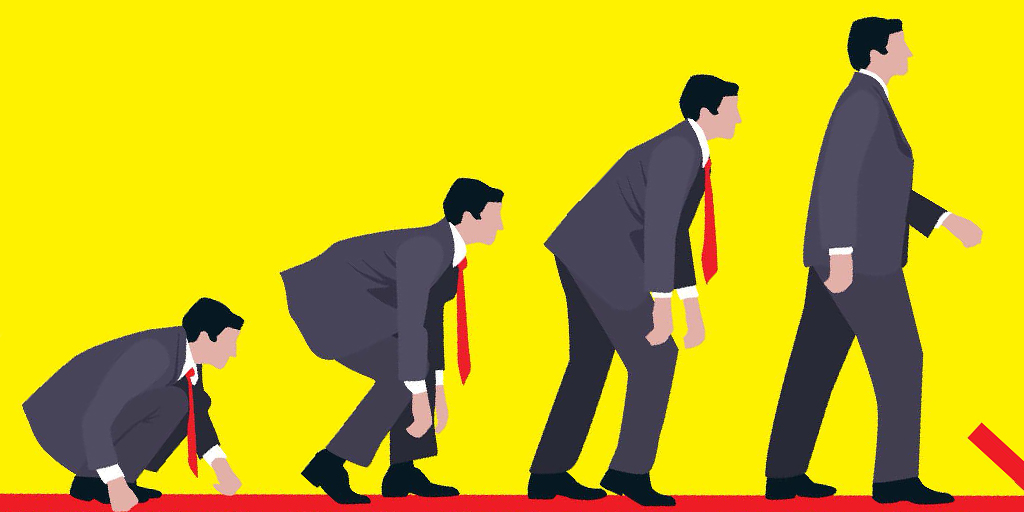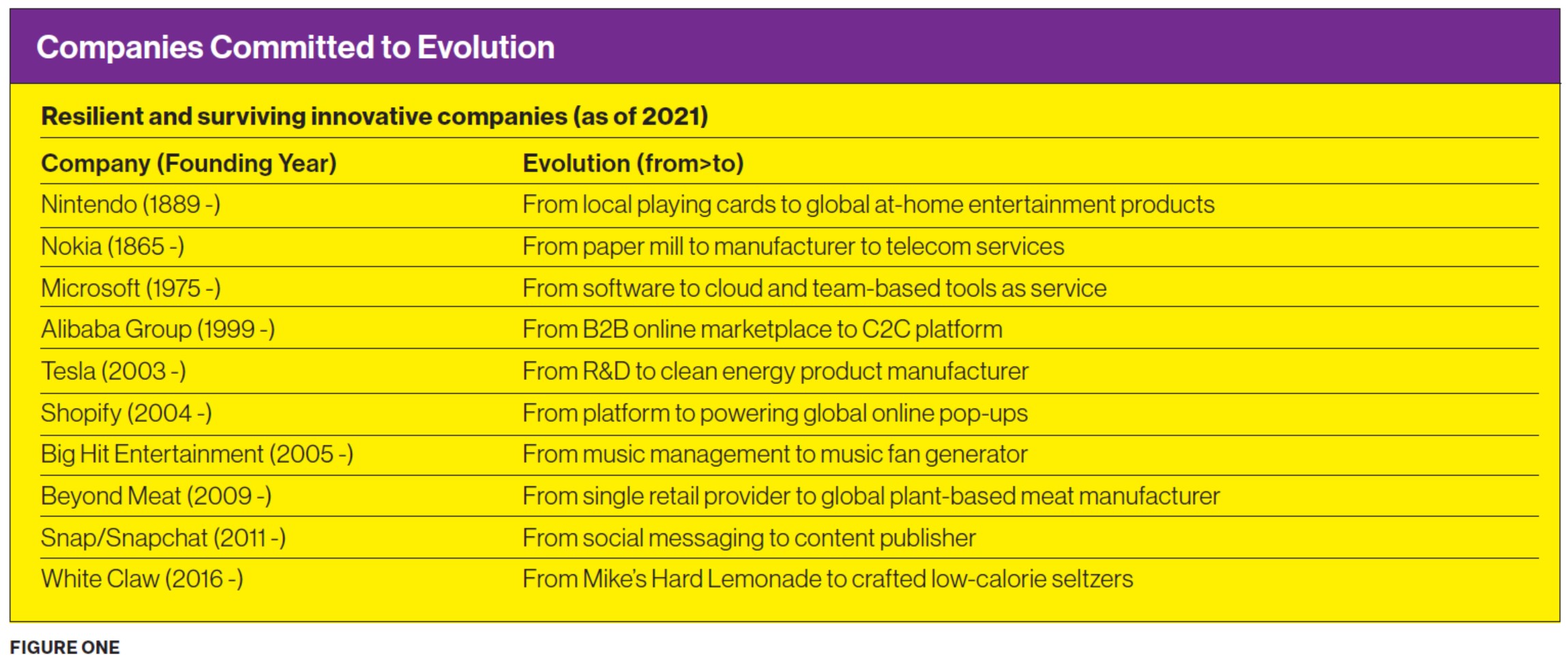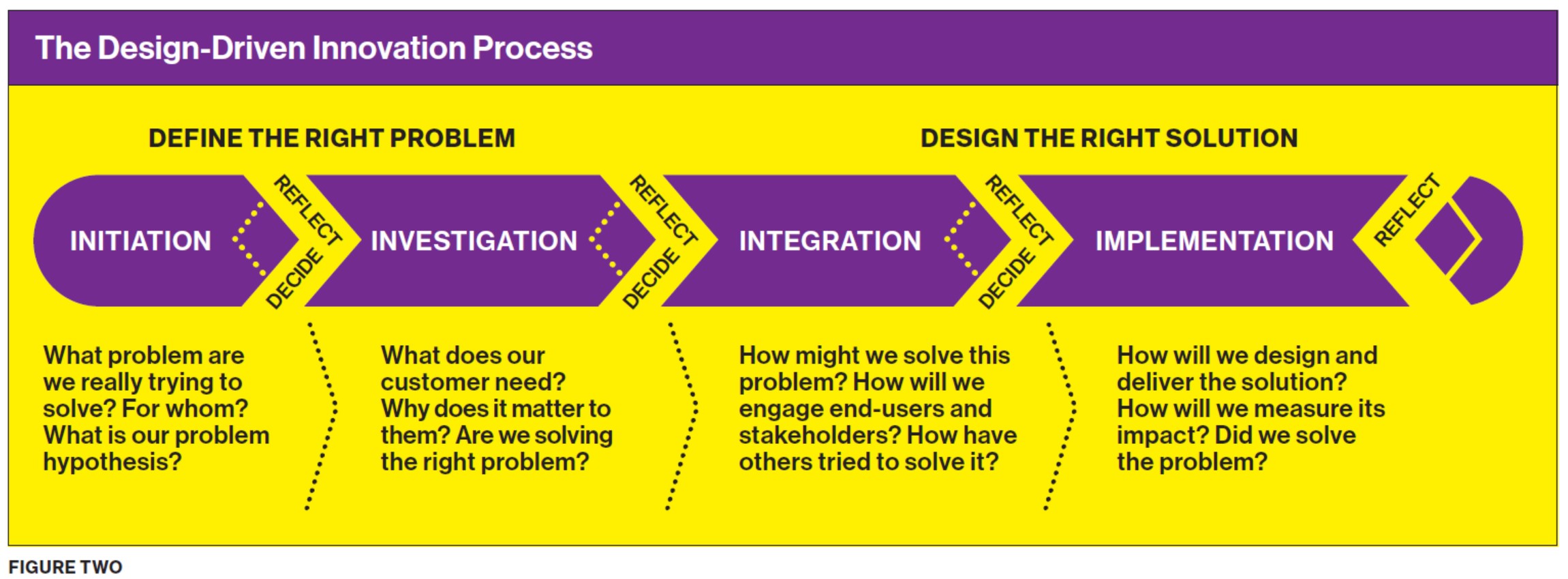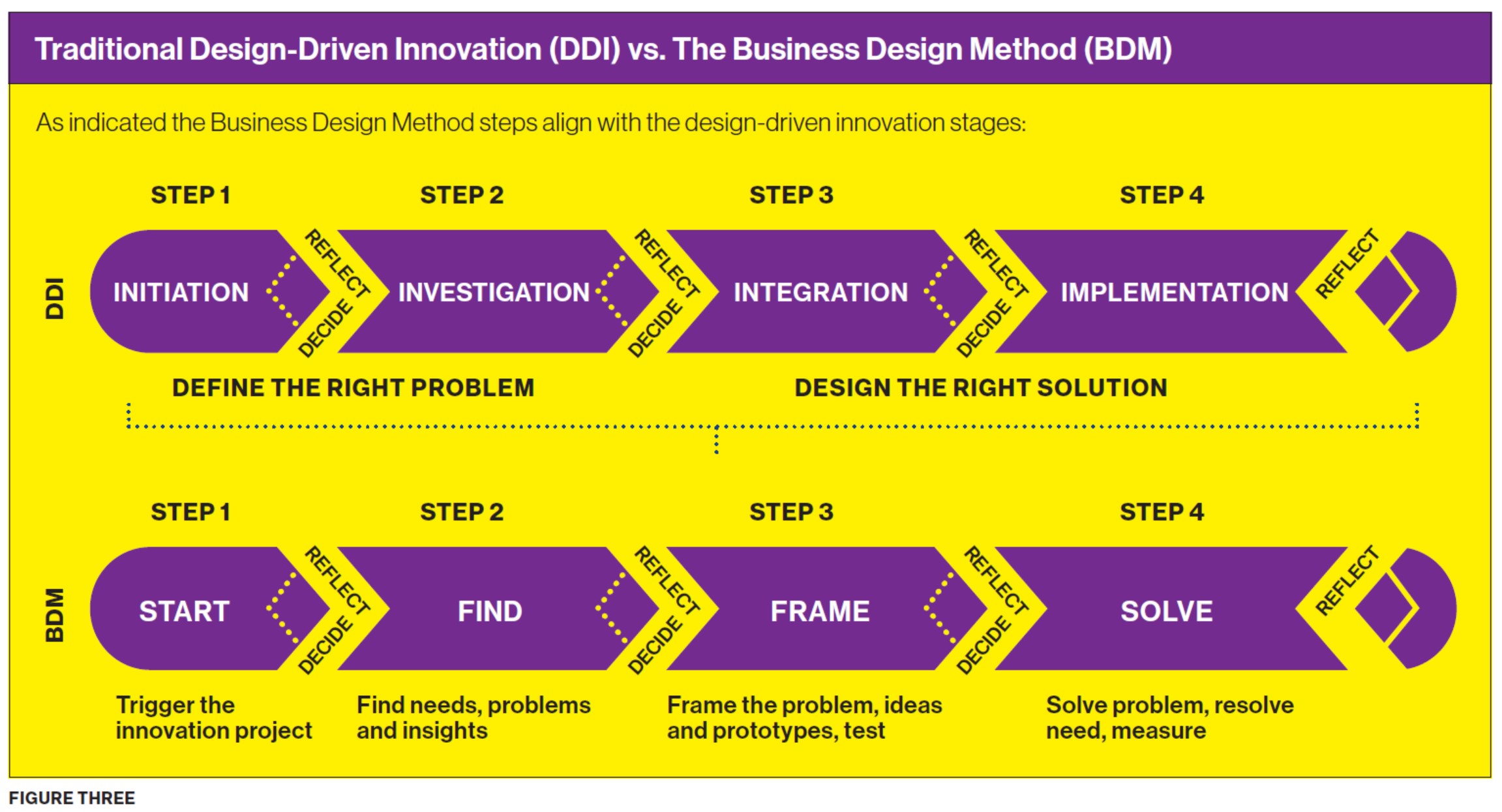
Toys”R”Us. Polaroid. Blockbuster. What can we learn from these once-successful, since-fallen innovators? All of these companies fell into the ‘success trap’ by exploiting their (historically successful) business activities — and failed to explore evolving customer needs to enhance their long-term viability.
At the other end of the spectrum are companies like Tesla, Shopify and Alibaba, all of which are positioned to survive and thrive beyond the global pandemic. These companies share three common practices: They have managed to evolve their original business models to meet changing customer needs; they combine design with engineering; and they have created a culture of experimentation.
In short, these companies are examples of sustainable innovation in practice. They make it clear that designing and redesigning your business in response to what your customers need over time is crucial for survival and sustained competitive advantage. In this article, I will present key principles for making this a reality in any organization.
Leading Innovation
To lead in an innovative organization, you first need to understand how the people around you define and interpret the term ‘innovation.’ It is most often associated with successfully bringing a new and improved product or service to market, resulting in consumer adoption. However, people often confuse the what (the new or improved product or service) with the how (the process of ideating and bringing new products to market).
Complicating matters, innovation is both a noun and a verb. As a noun, it is an idea or object perceived as new; a new idea or object adopted by many; or the output of the process of innovating. As a verb, innovation is a structured process of generating, developing and commercializing an idea into a new or improved solution.
Why bother with the semantics? To start with, it’s important to appreciate that without a process, there can be no output. Put simply, the verb trumps the noun. And without an effective innovation process, there can be no new and improved product or service, no market adoption and no new revenue or impact.

The most important aspect of innovation
is defining the problem to be solved.
To effectively participate in an innovation process, we must appreciate the critical factors that influence our way of thinking as we seek to introduce something new. These factors have the potential to transform organizations, and they include:
- Political factors such as trade policy uncertainty and geopolitical tensions that impact supply chains, manufacturing and trade.
- Economic factors such as the what and how of production and navigating circular economy tensions.
- Technological factors such as the increasing relevance of privacy issues and the race to set up Big Data and AI teams and databases.
- Social factors such as growing social unrest and global world health issues (which of course includes pandemics).
- Environmental factors such as weather-related disasters, ranging from Caribbean hurricanes, to fires in Australia and California, to floods and drought in Africa.
These factors can impact you regardless of whether you work for a start-up, a large corporation or a public service organization. Effectively participating in innovation also requires specific skills, including the following:
PROBLEM DIAGNOSIS SKILLS. To effectively solve problems, you must first learn how to diagnose, define and frame the right problems. This requires critical, reflective and empathic thinking. These skills are radically different from those used by today’s analytical thinkers and by those who tend to over-engineer approaches to human needs.
THE ABILITY TO NAVIGATE COMPLEXITY. Today’s and tomorrow’s leaders need to develop the ability to deal with complexity and ambiguity and learn to adapt to changing needs of customers, contexts and climates.
COMMUNICATION SKILLS. Those who have the willingness and courage to communicate their thoughts, ask more questions and solicit ideas from their team will prevail.
INNOVATION-READINESS. This describes people who are open to new experiences, accept failure as a pre-condition for success, quickly adopt new ideas and who have the ability and willingness to adapt to changing situations.
The Evolution of the Innovation Process
Traditionally, the most widely practised innovation process involved two critical stages: initiation and implementation. The first stage involved initiating a project based on a chosen problem to be solved; investigating the problem; and then deciding whether to invest in the development of a solution to that problem. The second stage, implementation, involved developing a new idea into a solution; producing, manufacturing, packaging, marketing and distributing the new solution; and evaluating whether the solution solved the intended problem.
This traditional model is still popular today, and it’s easy to see why: It favours tight control from the C-suite and entails the use of existing operational infrastructures, systems and resources. The bad news: This approach generally results in only incremental innovation or improvements to existing products and services. The problem is that it spends too little time and effort on the most important aspect of innovation: defining the problem to be solved. Instead, most of the effort, time and resources are spent on generating a solution to the perceived problem — which gravely assumes that the problem that has been identified is the right one to solve.
Designers have always taken a human-centric approach to their work. Human-centred design (HCD) involves a dynamic and reflective process of observing humans to understand their needs, wants and motivations, and proposing a desired state or outcome. Human-centred design is defined as an approach to designing platforms, products and services, that model end-user behaviour and are intuitive, desirable and commercially viable.
The aim of HCD is to develop empathy for others in order to make insightful decisions and take impactful action. The key principles of HCD include:
- Focus on understanding people
- Focus on solving problems for people
- Understand that human systems are interconnected (platforms and planet)
- Be iterative and generative
- Always be seeking feedback
- Test prototypes
- Learn, do, refine and repeat
In recent years, close examination of the traditional approach to innovation by academics and practitioners has unearthed its inefficiencies. Out of this, a more sustainable innovation process emerged: a design-driven innovation model that embraces a human-centred focus. Design-driven innovation can be defined as ‘the design, development, management and implementation of an innovation that meets the needs of the target end-user’. This approach invests strategically in defining the right problem to solve, and results in a designed solution that offers value and meaning for consumers. This approach involves four-stages:
- INITIATING a project based on a problem hypothesis, and creating a project (design) brief and research plan to investigate the assumed problem.
- INVESTIGATING and validating the customer needs associated with the problem hypothesis; researching, collecting and analyzing data; ultimately defining needs and the right problem to solve.
- INTEGRATING insights and ideas into prototypes, framing and reframing the problem to solve, and testing prototypes with external and internal stakeholders.
- IMPLEMENTATION, which involves designing, testing and implementing final prototypes and delivering a solution to the problem; followed by evaluating the solution to determine
- if the problem was solved or not.

Notably — and improving on the traditional approach — this model’s first two stages focus on defining the right problem to solve, while the latter two focus on designing a solution. This model shows a better balance between investing in defining the right problem and generating solution prototypes, before investing significant resources in the final design and delivery of the solution. Each stage demands reflection prior to decision-making, granting permission to both management and innovation teams to determine whether they should move forward or backward. This process separates research from traditional R&D, investigating the intended customer’s needs prior to defining the problem — which positively impacts the design of a solution that is solving the right problem for the target end-user.
Design-driven innovation aims to facilitate ongoing dialogue with stakeholders (internal and external), resulting in insightful and informed decision-making between each stage. The innovation manager or participant is guided with a series of questions to spark discussion and reflection before moving forward towards action. For example, the initiation stage prompts the team to ask, What problem are we really trying to solve here? And for whom, our company or the customer? The investigation stage then asks, What does our customer need? Why does it matter to them and to our company? Next, the integration stage asks, How might we solve their problem? And finally, the implementation stage asks, How will we design and deliver the solution? Along the way, these questions serve as prompts to surface assumptions, biases and beliefs that may affect the quality of the innovation process.
The Business Design Method
Business Design (BD) is a relatively new discipline that integrates management frameworks, anthropological methods and design principles to solve organizational challenges. It offers a structured methodology to orient organizations to recognize that the marketplace and customers are evolving, and to evolve their business processes and models accordingly.
BD involves cross-functional teams that span marketing, strategy, HR, product design and development, finance and operations. It involves both internal and external stakeholders (i.e. customers or end-users) and is focused on the effective management of the design, development and delivery of an innovative solution. Examples of its diverse applications include strategic design, business model design, employee experience design, service design, and customer experience design.
While the design-driven innovation model remains powerful, like most things around us, it too has evolved: The Business Design Method (BDM) is its next iteration — an agile framework that simplifies the complexity of an innovation development process. BDM is designed to assist with the structuring of your thoughts, questions and actions along the uncertain and ambiguous innovation journey. Think of its four steps as prompts and guides for business design thinking and doing, leading to resilient and sustainable innovation. The four steps align directly with the design-driven innovation stages described earlier:

STEP 1: Start (formerly Initiation)
KEY ACTIVITIES: Initiate project; form team; propose problem hypothesis; create an innovation design brief.
PARTICIPANT TYPE: Initiators have the drive to start something; the curiosity to explore; and the ability to focus on strategic problem solving.
OUTPUT: Challenge brief; team profile; and innovation design brief.
STEP 2: Find (formerly Investigation)
KEY ACTIVITIES: Investigate and validate needs; collect and analyze data; discover patterns and insights.
PARTICIPANT TYPE: Investigators have the drive and ability to observe, sense and inquire; to collect information and discover needs; and be able to uncover insights.
OUTPUT: Data collection; data analysis; needs analysis; and a problem statement.
STEP 3: Frame (formerly Integration)
KEY ACTIVITIES: Define and frame the right problem to solve; generate ideas; design prototypes; and test with end-users and stakeholders.
PARTICIPANT TYPE: Integrators must have the ability to make sense of data patterns and insights; and be skilled at analyzing and synthesizing information.
OUTPUT: Customer persona(s); rapid prototypes; and a customer journey map.
STEP 4: Solve (formerly Implementation)
KEY ACTIVITIES: Produce and package the ‘solution’ and determine whether the problem has (or has not) been solved.
PARTICIPANT TYPE: Implementers are skilled at tactical problem solving, taking action and measuring performance.
OUTPUT: Alpha prototype; implementation plan; and performance measures.
These four steps are sequential as a best practice. However, you can ‘start’ at different steps, depending on which stage you begin your innovation initiative. For example, you might begin at Step 3 (frame) only to discover that you are attempting to solve the wrong problem, and therefore must return to Step 1(start) to articulate a better brief, or move back to Step 2 (find) to lead more field research on the right and solvable problem to focus your efforts upon.
When adopted as a process map and framework, the Business Design Method reduces the complexity of innovation development and the fear associated with uncertainty, while increases a team’s confidence in navigating it. By following this ‘map’, efforts focus on uncovering the needs that lay below the surfaced problem. For many organizations, this can effectively minimize the pressure of being a fast-follower who constantly struggles to innovate.
Practitioners of this method have emphasized the value of being liberated from being boxed into specific solutions, so that they can access a wider array of possible solutions. When practised as a ‘recipe’, BDM opens the door to going beyond business stakeholder assumptions about customers to gain a deeper understanding of their needs and motivations. It minimizes biases and increases insight, resulting in more impactful solutions. Following are examples of different ways to apply Business Design.
PRODUCT/SERVICE: CHANGING WHAT YOU OFFER. OXO, founded in 1990 in NYC by Sam Farber, is a manufacturer of kitchen utensils and housewares. Farber, an industrial designer and entrepreneur, observed his wife struggling to hold her potato peeler due to her arthritis, and questioned why ordinary kitchen tools hurt, instead of help, the home cook. Sam prototyped, tested and launched a Good Grip series of inclusive-design cooking tools that could benefit all people (with or without arthritis). OXO has grown to offer over 1,000 Good Grips products designed to delight end-users.

POSITION/MARKET: CHANGING WHO CONSUMES YOUR PRODUCT. Umpqua Bank is a commercial bank based in Oregon, founded in 1953 by a group of timber industry workers seeking a way for their employees to cash their payroll cheques. Over the years, the bank has redesigned its product, service and retail strategies to meet the needs of both the citizens and businesses located near its branches. They shifted their focus from convenience and speed, to connecting with the locals (people) who value community prosperity as much as their own. They offer a café and community resource centre and exemplify the concept of ‘slow banking.’ Their business design approach has resulted in sustained growth for them and their clients, from their early start of $120 million to $8 billion in 2019.
PROCESS: CHANGING HOW YOU DO IT. Founded in 2009 in Canada, Slack Technologies started as a gaming company that had developed an internal process, application and platform for collaborative and remote based teams. Although the game failed, their internal communication process, called Slack (acronym for Searchable Log of All Conversation and Knowledge) proved to be an improved design over most competitive project management and communication tools. Users from around the globe adapted the platform, leading to a successful acquisition by Salesforce in 2020.
PARADIGM: CHANGING WHY IT MATTERS AND WHAT VALUE IT CREATES. IBM is a prime example of a company that has redesigned its business model, products and services, systems and markets throughout its history. With a 350,000-plus workforce, it has embraced a design orientation with its proprietary ‘Enterprise Design Thinking’ formula — a simple approach to transformation and reinvention that has enabled it to evolve from mainframe experts, to designing and prototyping driverless cars and launching cybersecurity and AI services with an empathic understanding for both end-users and stakeholders.
In closing
Amidst all the ambiguity faced by modern businesses, some things will never change: Better-designed products and services attract more customers; well-designed organizations attract and retain top talent; and design-driven leaders craft companies and cultures based on the innovative logic of the designer’s approach.
For organizations to survive, let alone thrive, they will need to effectively embrace a business design approach to connect with their customers, understand their unmet needs and find effective yet profitable ways to make their lives better. In short, they need to evolve their business. Sadly, those who fail to adapt to this reality face a slow and inevitable decline towards irrelevance. 
Angèle Beausoleil is an Assistant Professor of Business Design and Innovation and Academic Director of the Business Design Initiative at the Rotman School of Management. Canada’s first PhD in Innovation Pedagogy, she is the author of Business Design Thinking and Doing: Frameworks, Strategies and Techniques for Sustainable Innovation (Palgrave MacMillan, 2022).
Share this article: